Land ownership in Britain is one of the most unequal in the world. This is a call out to groups and individuals all over the country who think the time has come for us to have more control of our land.
In order to draw attention to this injustice, we invite you to organise an event in your area between the 14th and 22nd of April. This could be a public meeting or protest with leafleting or maybe a banner drop, occupation or mass trespass.
Visit Facebook page for Week of Action
On Saturday April 14th, the Land Justice Network will be holding a walking tour of two of the wealthiest boroughs in London, yet where many still live in poverty: Westminster, largely owned by the Duke of Westminster, and Kensington and Chelsea, where the Earl of Cadogan owns 93 acres.
Visit Faceboook page for the walking tour
Here we can see the massive area that has been taken from the people centuries ago, and now home to some of the richest landowners, investors and property speculators. By accident of birth these privileged individuals inherit a life of luxury, and by use of trusts they avoid the inheritance taxes everyone else is required to pay, so enabling the grossly unequal distribution of land to continue. Is it right that the rich can avoid paying their taxes and that their land and wealth continues to grow at the expense of the rest of society?

More than a third of our land is still owned by the aristocracy, whose ancestors seized it during the Norman Conquest. By fencing off land and using violence to exclude people, landowners (the lords) have deprived the rest of us of what should be a shared resource.
The vast majority of us, the commoners, own little or nothing. Even most of the land that was once declared common land (for local use) has been taken away from us. Land in community use, such as hospitals, fire stations, school playing fields, is increasingly being sold off for the short term profit of private developers.

Land issues are central to much inequality and environmental degradation in society today. Landowners control and exploit our natural resources and force the rest of us to be beholden to them for food, shelter and other needs. Despite their huge wealth, our taxes are used to pay them £billions in ‘farming’ subsidies and housing benefit, increasing inequality still further.
In the countryside, large landowners dominate agriculture, squeezing out small farmers and collective farming. Agriculture workers are poorly paid and struggle to find housing that they can afford. Huge tracts of land are turned over to grouse moors to provide the rich with space for their destructive pastimes. Our freedom to walk and enjoy nature is largely restricted to a limited network of ‘rights of way’.

In the cities, land is also unequally distributed, owned by a combination of traditional aristocrats and their modern-day equivalent: offshore companies and institutional investors. Increasingly homes are now owned by buy-to-let landlords rather than by individual home owners or social landlords. All of this forces up the cost of living for those who have to rent. Tenants have little security with standard tenancies running for just 6 months.
There are no controls on rent, so now on average people pay a quarter of their wages to their landlord, while in London its roughly half their salary. Even those who manage to buy their own home rarely own it outright until late in life. Most people are stuck paying a big chunk of their salary on their mortgage every month, with the worry that if they lose their job they could lose their home too.
In the last 6 years homelessness has dramatically increased. It is obscene that in this day and age so many people do not have a secure home. This could be achieved if the £9.3 billion a year paid in Housing Benefit to wealthy landlords was instead used to build social housing in all communities.
Urban areas also need well managed parks, community gardens and allotments, so that everyone has access to nature and the opportunity to grow food. But increasingly these spaces are being sold off or rented out to private companies for events, damaging the parks and shutting out residents for lengthy periods of time.

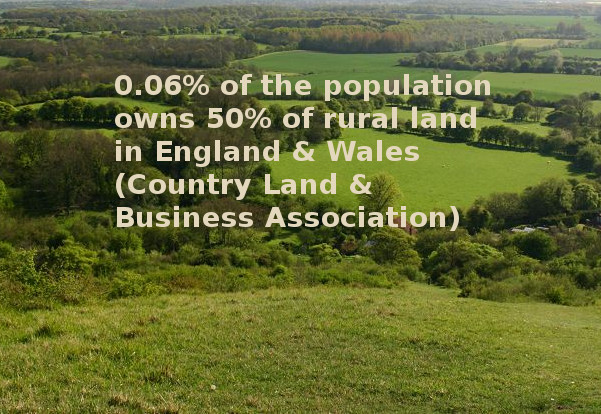
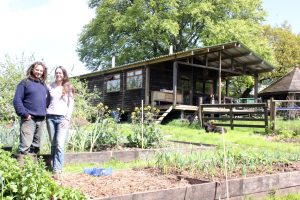
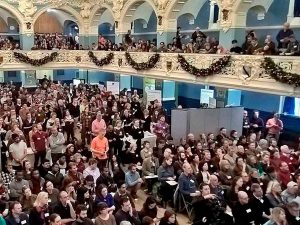
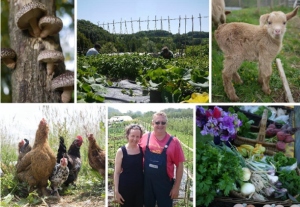

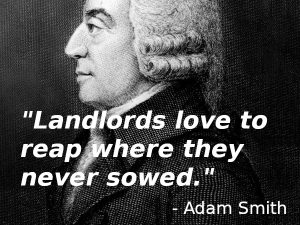


4 Comments
What tosh. I live in the countryside and work on the land owned by these “rich aristocrats” you speak of. My experience of my landlord and his family is that they are kind, socially responsible, charitable people who treat the tenant farmers fairly and kindly. Many of them get stuck in; helping with lambing and working the land themselves. They provide affordable housing to many in a small community and work to even more. Plus, they bought the land in the 19th century, not the Norman conquest. This article in narrow minded and does not respect the complexities and rich tapestry of a working country Estate.
It’s difficult to believe that anyone could miss the point by so much. I’m sure your landlords are decent people, but we’d like to reform land ownership so that the affordability of housing and the treatment of tenants is not down to the whim of landlords. Tugging your forelock isn’t going to change the fact that 0.06% of the population owns 50% of rural land in England and Wales. If you’re content with that statistic, and inherited privilege generally, we can’t reach you.
Here, here Dave, totally agree. There is a good model for sustainable land use in the UK, it is called crofting. Also, in 2016 in a stretch of 127 miles (South Uist to Galson in the western isles) 50% of the land mass and 73% of the population lived on community owned land and 66% of all the crofts are on community owned land.These figures will now be higher as the new land reform act for Scotland (2016) has provided £60 million for communities to purchase their own land. This process is ongoing and although not without its own difficulties (owning and managing land is not always easy…), the system is inherently a good one with the right intentions and backing from the Scottish government it seems.
Grants of 50% are available to build or improve housing on crofts, together with grants for agricultural improvements. We had a 50% grant for a large polytunnel 3 years ago on our 6 acre croft. It seems that we need to educate people to these possibilities in Scotland but also to help to roll out this system to the rest of the UK. As you know some progress has been made in Wales regarding this sort of thing. Attracting young people to crofting is a priority for the Scottish Crofting Federation and the Crofting Commission and there are good opportunities/grants available if you are under 40yrs old.
So, if you want to be more low impact and grow your own food etc, come to Scotland, you will be made very welcome, as we were.
By the way, fantastic site!!
Yes, Scotland and Wales seem to be way ahead of old ‘I know my place’ England. We live in hope.